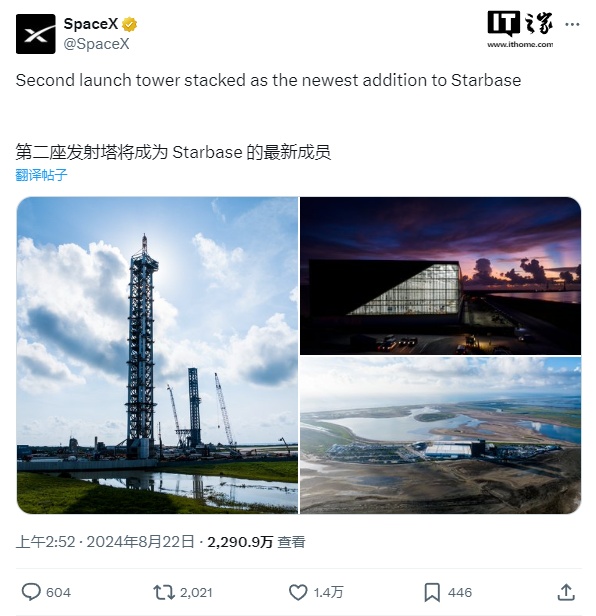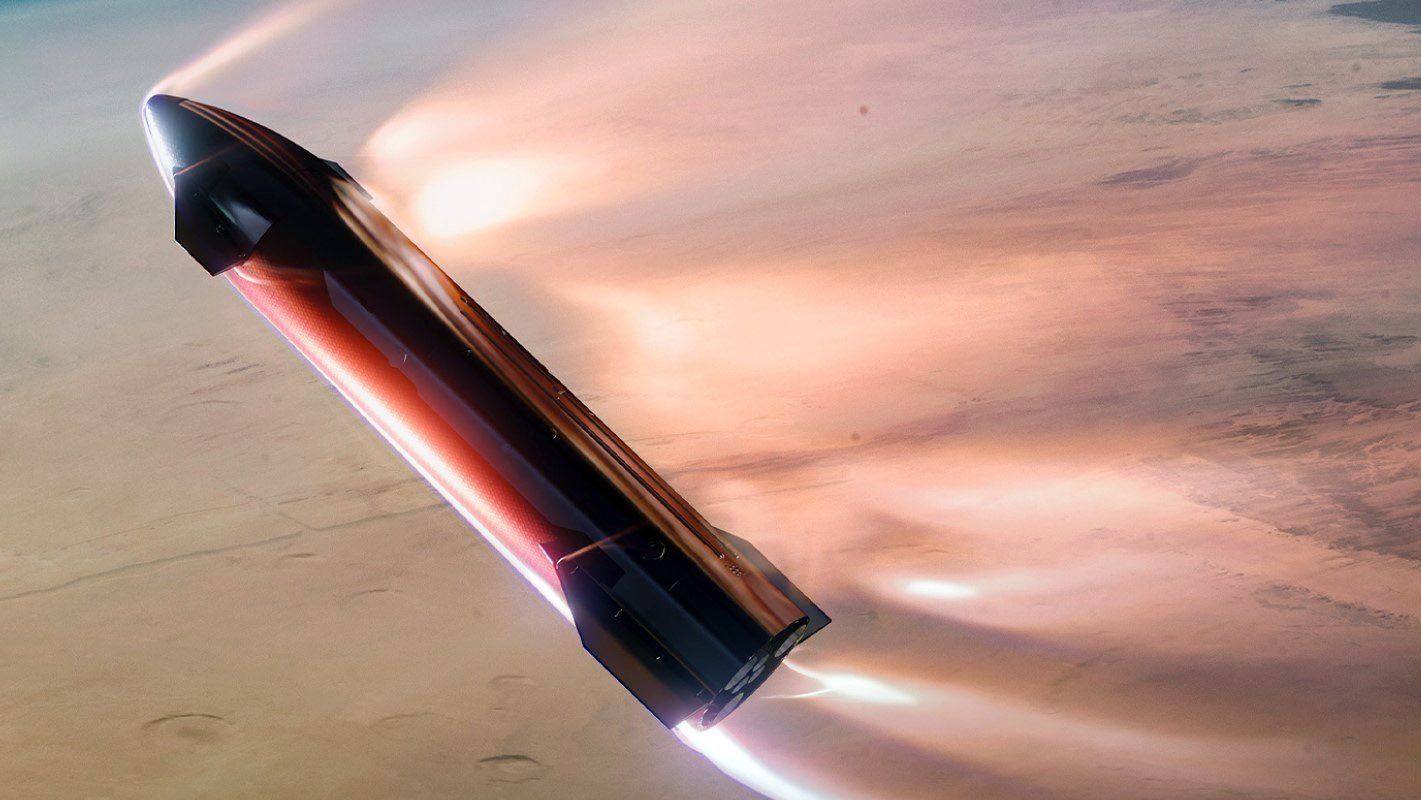SpaceX’s ambitious plan to begin Mars missions with its Starship megarocket is set to take off within the next two years, according to the company’s founder and CEO, Elon Musk.

Elon Musk has revealed SpaceX's ambitious plan to begin Mars missions with its Starship megarocket within the next two years. In a recent post on the social media platform X, Musk outlined a phased approach to colonizing the Red Planet.
“These will be uncrewed to test the reliability of landing intact on Mars,” Musk announced in the statement. “If those landings go well, then the first crewed flights to Mars will be in 4 years.”
The favorable alignment of Earth and Mars for interplanetary missions occurs every 26 months, highlighting the critical timing of these launches.
“Being multiplanetary will vastly increase the probable lifespan of consciousness, as we will no longer have all our eggs, literally and metabolically, on one planet,” Musk added, looking beyond these initial steps towards a rapidly increasing flight rate that will lay the foundation for a self-sustaining Martian city within the next two decades.
The Starship system comprises a two-part configuration: the Super Heavy first-stage booster and the 165-foot-tall Starship upper-stage spacecraft. Combined, they create the most formidable rocket ever built, standing approximately 400 feet tall and generating 16.7 million pounds of thrust at liftoff—almost double that of NASA's Space Launch System used in the Artemis moon program.
In contrast to its expendable NASA counterpart, Starship is designed for full and rapid reusability. After each mission, SpaceX plans to land the Super Heavy booster directly back on the launch mount for quick inspections, refurbishments, and subsequent relaunches. This innovative approach not only showcases SpaceX's commitment to sustainability but also significantly reduces the costs associated with space travel.
Currently, Starship is in the testing phase, having completed four missions as of June this year. Each mission has seen improvements in performance, meeting all major objectives during the latest flight. Preparations for a fifth flight are underway, with recent tests on both the Super Heavy booster and the Starship craft intended for the upcoming mission.
The next flight promises to be particularly thrilling, featuring the first attempt to land the Super Heavy booster using the launch tower's “chopstick” arms—a maneuver that, if successful, will mark a significant achievement in spaceflight technology. As Musk often remarks, “excitement is guaranteed” when it comes to Starship flights, pointing to the potential of these missions to bring humanity closer than ever to becoming a multiplanetary species.
The above is the detailed content of SpaceX's Starship Megarocket Aims to Begin Mars Missions Within the Next Two Years. For more information, please follow other related articles on the PHP Chinese website!
 Starlink Mini priced at $599 as SpaceX makes weight specs official and offers Mini Roam plan for $30/monthJun 21, 2024 am 06:35 AM
Starlink Mini priced at $599 as SpaceX makes weight specs official and offers Mini Roam plan for $30/monthJun 21, 2024 am 06:35 AMSpaceX is starting a limited trial of its new and compact Starlink Mini dish for select satellite Internet subscribers in the US. The Starlink Mini kit price, however, is now higher than the Standard Kit. SpaceX is running a promo on the Starlink Sta
 $299 Starlink Mini dish with built-in router and MediaTek Wi-Fi 6 chip will fit in a backpackJun 19, 2024 am 06:44 AM
$299 Starlink Mini dish with built-in router and MediaTek Wi-Fi 6 chip will fit in a backpackJun 19, 2024 am 06:44 AMAfter pictures of a new and mysterious Starlink Mini dish with integrated router emerged, Elon Musk confirmed its existence and said that it will cost just "about half the price of the standard dish to buy." Elon even bragged that he is cur
 SpaceX prices Starlink Mini dish at $599 as it makes weight specs official and offers Mini Roam plan for $30/monthJun 20, 2024 pm 09:40 PM
SpaceX prices Starlink Mini dish at $599 as it makes weight specs official and offers Mini Roam plan for $30/monthJun 20, 2024 pm 09:40 PMSpaceX is starting a limited trial of its new and compact Starlink Mini dish for select satellite Internet subscribers in the US. The Starlink Mini kit price, however, is now higher than the Standard Kit. SpaceX is running a promo on the Starlink Sta
 Walmart starts selling Starlink dishes at 17% discount on top of $200 regional credit offer for new usersJun 22, 2024 am 09:30 AM
Walmart starts selling Starlink dishes at 17% discount on top of $200 regional credit offer for new usersJun 22, 2024 am 09:30 AMAfter Home Depot, Target, Costco, and Best Buy, it is now the turn of Walmart to start selling the Starlink Standard Kit. SpaceX is trying to expand Starlink's customer base, and the appearance of its dish at the stores of the retail juggernaut will
 SpaceX 星舰基地再添新塔,距马斯克圆梦火星更近一步Aug 23, 2024 am 07:33 AM
SpaceX 星舰基地再添新塔,距马斯克圆梦火星更近一步Aug 23, 2024 am 07:33 AM本站8月22日消息,SpaceX官方宣布,其星际基地(Starbase,即南得克萨斯发射场)第二座星舰发射塔现已完成封顶(完成塔身的全部堆叠)工作,这一过程仅用了41天。fenyeSpaceX还表示,他们正准备在未来一个月内相继发射的两艘载人龙飞船,分别执行SpaceX的第14和第15次载人任务,也就是“北极星黎明”商业航天任务和NASA的Crew-9任务。其中,“北极星黎明”任务将完成人类首次商业太空行走,并打破近地轨道载人任务的最高轨道高度记录,详情可见本站此前报道。此外,如果波音无法通过自
 Elon Musk pegs the first human flight to Mars for 2028 with a colony to follow in 20 yearsSep 08, 2024 pm 09:30 PM
Elon Musk pegs the first human flight to Mars for 2028 with a colony to follow in 20 yearsSep 08, 2024 pm 09:30 PMWhile talking about thefirst reusable spaceship achievement, and the fact that its tonnage costs for a trip to Mars need to be much lower, Elon Musk casually mentioned that he envisions the first manned Starship flight to Mars will happen in 2028. Fi
 四试告捷,SpaceX 星舰史上首次完成试飞任务Jun 11, 2024 pm 01:15 PM
四试告捷,SpaceX 星舰史上首次完成试飞任务Jun 11, 2024 pm 01:15 PM本站6月6日消息,虽然信号中断、机身严重受损,但SpaceX官方确认星舰已经成功在印度洋完美软着陆,解锁新的里程碑。北京时间6月6日晚20:50左右,SpaceX星舰成功,开启第四次试飞任务,随后按计划与超重型助推器完成分离。发射约9分钟后,星舰成功进入预定轨道。随后,B11超重型助推器已经成功溅落在墨西哥湾海域中。发射约47分钟后,星舰开始重新进入大气层,相比于在这一阶段表现并不完美的第三次试飞,本次星舰选择了相对平缓的弹道,利用更多的时间使得速度缓缓下降,以减少进入高密度空气时所受到的剧烈冲
 美国 FCC 驳回 SpaceX 频谱申请,移动卫星通讯服务受阻Mar 28, 2024 pm 03:14 PM
美国 FCC 驳回 SpaceX 频谱申请,移动卫星通讯服务受阻Mar 28, 2024 pm 03:14 PMSpaceX一年前向美国联邦通信委员会提交了一项申请,希望FCC批准其在SpaceXGen2非地球静止轨道卫星系统中添加移动卫星服务(MSS)系统。在这份申请文件中,SpaceX希望通过修改授权,使其Gen2NGSO系统能够在以下频段运营:1.6/2.4GHz频段2GHz频段2020-2025MHz(地球-空域)频段当前这项申请已经被FCC驳回,理由是“不可接受”,审批人员认为SpaceX与卫星运营商Globalstar之间关于1.6GHz和2.4GHz频段的争议存在争议。本站注意到,Space

Hot AI Tools

Undresser.AI Undress
AI-powered app for creating realistic nude photos

AI Clothes Remover
Online AI tool for removing clothes from photos.

Undress AI Tool
Undress images for free

Clothoff.io
AI clothes remover

AI Hentai Generator
Generate AI Hentai for free.

Hot Article

Hot Tools

WebStorm Mac version
Useful JavaScript development tools

PhpStorm Mac version
The latest (2018.2.1) professional PHP integrated development tool

SublimeText3 Linux new version
SublimeText3 Linux latest version

Notepad++7.3.1
Easy-to-use and free code editor

MinGW - Minimalist GNU for Windows
This project is in the process of being migrated to osdn.net/projects/mingw, you can continue to follow us there. MinGW: A native Windows port of the GNU Compiler Collection (GCC), freely distributable import libraries and header files for building native Windows applications; includes extensions to the MSVC runtime to support C99 functionality. All MinGW software can run on 64-bit Windows platforms.






